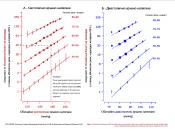A heart disease includes any disorder that affects the way that the heart normally functions. Heart diseases have many causes, some of these include smoking, high blood pressure, high cholesterol and physical inactivity. Although there have been dramatic improvements in the treatment and prevention of heart diseases the numbers of sufferers and deaths of heart disease are still increasing each year. Heart disease is the number one killer in Australia causing over 50% of the total deaths each year.
Smoking is one of the most common causes that lead to heart disease. Latest estimates in Australia say that around 18,000 people die each year form tobacco related diseases. The major factor of smoking leading to heart disease is the chemicals contained in tobacco smoke, which include tar, nicotine and carbon monoxide. In terms of the heart the nicotine and carbon monoxide of tobacco smoke causes a lot more damage than the tar in cigarette smoke.
Nicotine makes the heart beat faster which increases its need for oxygen. It also reduces the blood supply to tissue cells by narrowing the blood vessels. Carbon monoxide reduced the amount of oxygen that the blood is able to carry to body and heart. So while the nicotine is making the heart pump quicker and need more oxygen the Carbon monoxide is reducing the oxygen supply to the heart.
High cholesterol is the best known contributing factor leading to heart disease. Cholesterol is not always a bad thing. At normal levels it is essential for our bodies as it is used to build cell walls and is also used to produce hormones.
Cholesterol is a white fat like plaque that builds up on the walls of the arteries. This build up can end up causing a complete blockage which can lead to a heart...


